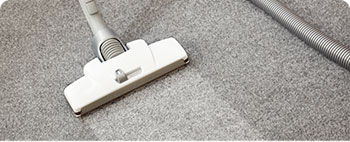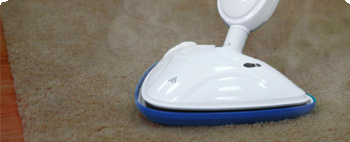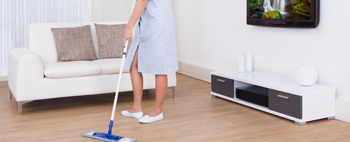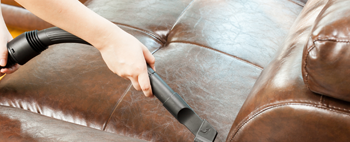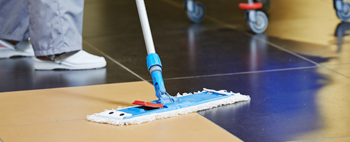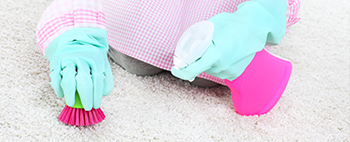Complete Guide to Erasing Unwanted Damp Smells
Posted on 05/10/2025
Complete Guide to Erasing Unwanted Damp Smells
Is your home or business plagued by persistent, unpleasant musty odors? Damp smells can make any environment feel unwelcome and uncomfortable. Fortunately, with the right approach, you can eliminate unwanted damp smells fully--restoring fresh, clean air throughout your space. This complete guide delves into the causes, remedies, prevention techniques, and cleaning solutions to help you erase damp odors for good.
Understanding Damp Smells: Causes & Concerns
Before tackling solutions, it's important to know why damp smells occur and why you should resolve them promptly.
Main Causes of Damp and Musty Odors
- Water Leaks (roofs, pipes, basements)
- Poor Ventilation
- Excess Humidity
- Mold and Mildew Growth
- Unwashed Fabrics and Carpets
- Condensation on Cold Surfaces
Damp smells are most common in areas like basements, bathrooms, attics, and laundry rooms. These odors are the result of moisture lingering long enough for bacteria, mold, or mildew to develop, releasing volatile organic compounds (VOCs) and spores that affect your indoor air quality.
Why Damp Smells Need Fast Attention
- Health Risks: Mold spores and airborne bacteria can trigger allergies, asthma, and other respiratory issues.
- Damage to Property: Moisture can rot wood, corrode metal, and degrade surfaces.
- Unpleasant Living Experience: Persistent musty odors affect comfort and peace of mind.
- Stubborn Stains and Further Spread: Ignoring damp can lead to black mold and embedded odors that are harder to remove.
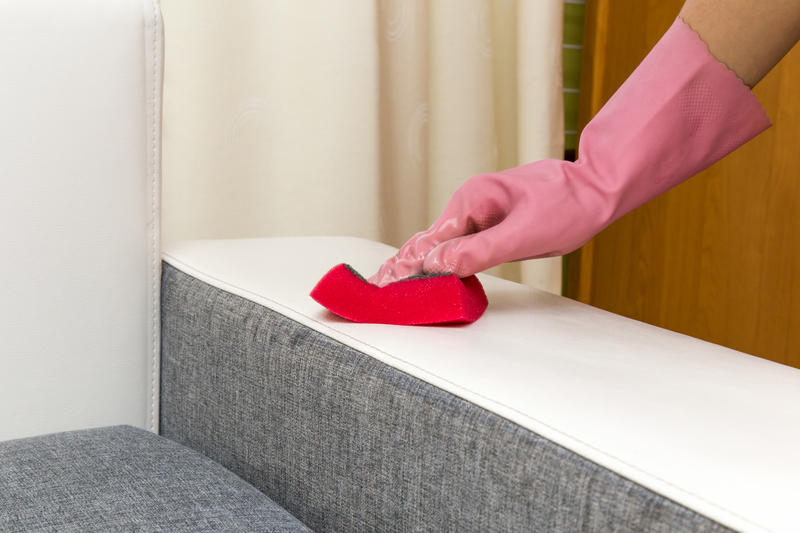
Step-by-Step Solutions to Erase Damp Smells
Let's break down the most effective methods to banish unwanted damp odors and prevent their return.
1. Locate and Fix the Source of Moisture
- Inspect plumbing for leaks, cracks, or drips under sinks, behind toilets, and in your basement or crawlspace.
- Check your roof and windows for evidence of seepage or condensation.
- Repair any leaking appliances (washing machines, dishwashers, water heaters).
- Seal gaps or cracks in foundation walls.
- If possible, invest in a moisture meter for ongoing monitoring.
Fixing the root cause of moisture is the most crucial step in erasing unwanted damp smells permanently.
2. Dry Out the Affected Area Thoroughly
- Open windows and doors to improve airflow and ventilation.
- Use dehumidifiers in damp-prone rooms or basements.
- Set up fans to keep air circulating over wet areas.
- Remove water-logged carpets, rugs, or furniture for separate drying if needed.
- For smaller items, hang them outside under the sun (UV rays help kill bacteria and mold spores).
Tip: Maintain indoor humidity below 50% to discourage mold and musty odors.
3. Clean and Disinfect to Remove Existing Odors
Best Cleaning Solutions for Damp Odors:
- White Vinegar: Natural, effective, and kills most bacteria and molds.
- Baking Soda: Absorbs moisture and neutralizes lingering odors.
- Hydrogen Peroxide: Good for tough mildew and mold stains.
- Specialized Mold Cleaners: Available at most hardware or home improvement stores.
How to Clean Musty Surfaces:
- Mix equal parts white vinegar and water in a spray bottle. Apply to affected surfaces.
- Let sit for at least 30 minutes to disinfect and break down odors.
- For porous items (carpet, upholstery), sprinkle baking soda liberally, wait several hours, and vacuum.
- For extensive mold, wear gloves and a mask; scrub hard surfaces with a brush and rinse thoroughly.
- Repeat treatments as needed until the damp smell is eliminated.
4. Use Natural Odor Absorbers
- Activated Charcoal: Place open containers or bags in musty areas to trap airborne odors and moisture.
- Baking Soda Bowls: Set out bowls in closets, cabinets, and corners to absorb persistent scents.
- Coffee Grounds: Neutralize unpleasant aromas in small spaces.
- Zeolite Rocks: These volcanic minerals effectively absorb humidity and odors from air.
*Change or refresh odor absorbers regularly for the best results.*
5. Deep Clean Fabrics, Carpets, and Upholstery
- Launder curtains, pillow covers, and washable fabrics with hot water and white vinegar.
- Shampoo carpets and large rugs with an enzymatic cleaner for organic odor removal.
- For persistent smells, consider professional steam cleaning or ozone treatment.
6. Improve Ventilation to Prevent Damp Smells
Good airflow reduces moisture and prevents musty odors from returning.
- Install extractor fans in bathrooms, kitchens, and laundry rooms.
- Leave ventilation grilles open or slightly ajar for constant airflow.
- Consider trickle vents on windows and doors.
- If your home is in a humid climate, a whole-house dehumidifier may be a wise investment.
7. Use Scented and Antibacterial Sprays (Where Appropriate)
- Opt for non-toxic, natural fresheners such as essential oil sprays (tea tree, eucalyptus, citronella).
- For persistent bacteria, try a disinfectant spray with antibacterial properties.
- These can help mask and eradicate any remnants of unwanted damp smells during your cleaning journey.
How to Prevent Damp Smells in the Future
Once you've successfully eliminated damp odors, regular habits and proactive maintenance can keep them from coming back.
Essential Preventative Tips
- Ventilate Daily: Open windows and use fans, even briefly, to ensure regular airflow.
- Use Dehumidifiers: Especially in basements, laundry rooms, and poorly ventilated areas.
- Repair Leaks Immediately: Fast action with leaks stops damp spots from developing indoor mold or mildew smells.
- Launder Frequently: Wash fabrics, bedding, and towels often to prevent odor buildup.
- Protect Vulnerable Areas: Store items off the ground; use waterproof bins in basements.
Routine Maintenance for a Must-Free Home
- Wipe down bathroom and kitchen surfaces regularly with antiseptic cleaner.
- Keep gutters and drains clear to avoid standing water near foundations.
- Seal cracks in windows, doors, and walls to prevent moisture ingress.
- Monitor humidity levels using inexpensive hygrometers.
- Keep closets, pantries, and storage areas dry and aired out. Use moisture absorbers as needed.
Professional Help: When to Call an Expert
- If you notice black mold, widespread rot, or recurring water issues, consult a qualified mold remediation specialist or plumber.
- Severe smells that linger despite home treatments may require ozone cleaning, deep extraction, or restoration services.
- Persistent musty smells often indicate hidden moisture issues--expert diagnostics can save you time, trouble, and long-term costs.
DIY vs. Commercial Damp Odor Solutions
Advantages of DIY Approaches
- Cost-effective and easily accessible ingredients like vinegar, baking soda, and charcoal.
- Promotes healthier, chemical-free living environments.
- Flexible for different materials and surfaces.
Benefits of Commercial Odor Eliminators
- Fast-acting sprays and gels designed to neutralize stubborn or heavy mold/damp smells.
- Specialized products for HVAC systems, vehicles, or carpeting.
- Long-lasting solutions for severe or recurring problems.
Tip: Consider blending natural remedies with targeted commercial products for comprehensive odor control.
Room-by-Room Damp Smell Checklist
Bathrooms:
- Ensure exhaust fans are functional and used consistently.
- Promptly repair leaking taps, toilets, or shower enclosures.
- Keep shower curtains and bath mats dry.
Kitchens:
- Check under sinks for leaks and mold development.
- Keep counters and floors dry.
- Dispose of garbage and compost regularly.
Basements and Crawlspaces:
- Install a sump pump or floor drain if regularly damp.
- Add dehumidifiers and monitor humidity frequently.
- Keep stored items off floors; use shelving.
Bedrooms and Living Areas:
- Launder bedding and curtains often.
- Vacuum carpets and area rugs with a HEPA filter vacuum.
- Place dehumidifiers in rooms exposed to high humidity.
Garages and Storage Rooms:
- Seal windows and doors to prevent water ingress.
- Use water-resistant storage boxes.
- Keep floors clean and dry; use desiccant packs for tools or documents.

Frequently Asked Questions About Removing Damp Odors
Can you get rid of damp smells permanently?
Yes, if you identify and remove the moisture source, clean thoroughly, and maintain good ventilation, musty smells can be prevented from returning.
How long does it take to erase damp odors?
This depends on the severity. Small areas may be odor-free within a day or two, while large moisture issues can require several days of thorough drying and odor treatment.
Are natural or chemical products better at eliminating damp smells?
Both can be effective depending on your needs. Natural remedies are great for lighter, surface problems and regular maintenance; commercial products may be needed for heavy contamination or deep infiltration.
Conclusion: Enjoy a Fresh, Odor-Free Home
Unwanted damp smells don't have to be a fact of life. By understanding the causes, acting quickly, and applying these proven strategies, you can eliminate unwanted musty odors and restore your space's comfort and cleanliness. Make these tips a part of your home routine, and breathe easy knowing your environment is as fresh as it should be.
- Address moisture sources immediately.
- Clean regularly with odor-fighting solutions.
- Maintain proper ventilation and humidity control.
- Take proactive steps to prevent future damp smells.
Don't let damp odors ruin your space--restore it to its natural, inviting state with this complete guide!








